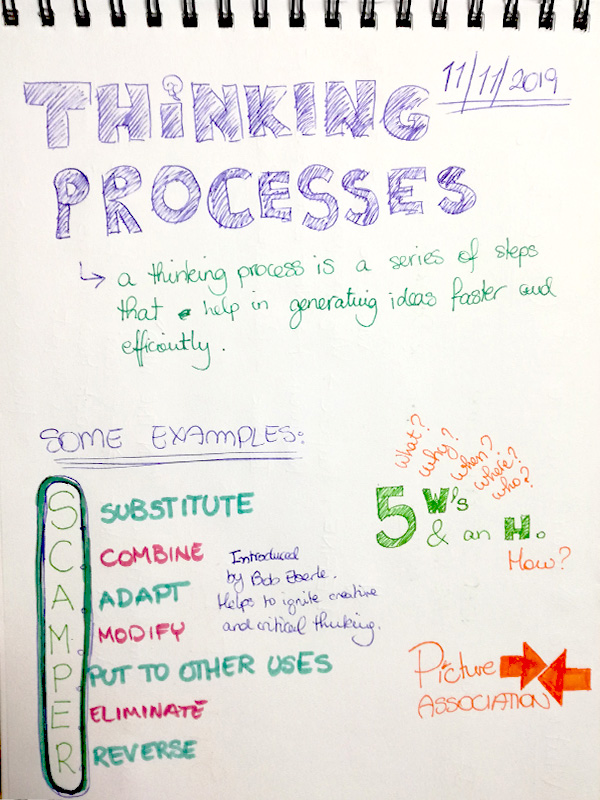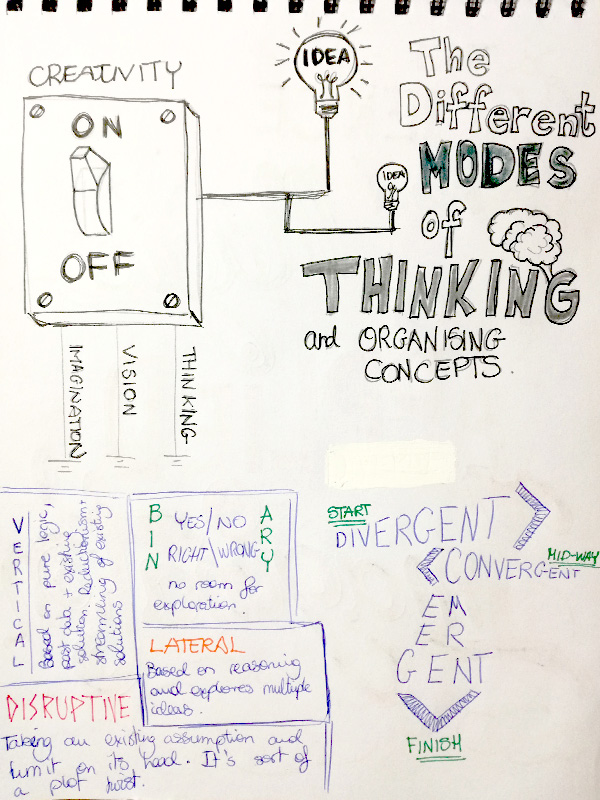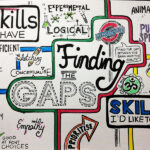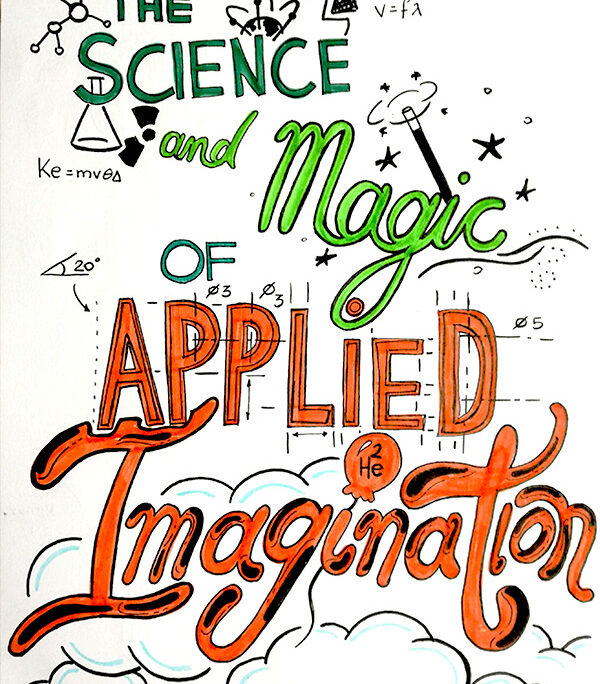
The Science and Magic of Applied Imagination
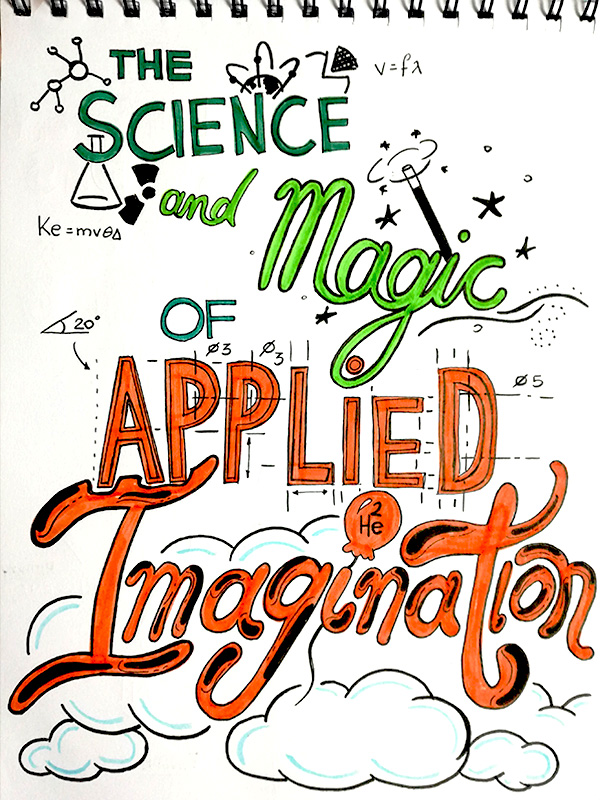
My thinking process
As a graphic designer, I like my work to be unique and meaningful. Simply designing for the sake of trends and ‘because it looks cool’ is not for me. Just like any other line of work, in order to design something well, it is good to use some form of thinking process to help get the creative mind to work.
I look for inspiration from different media that go beyond the frame of graphic design. I listen to music, watch movies… I like to read a lot also. I daydream frequently too. Many times a have hazy ideas floating around my head, yet unlike what many might think, I can organise them in a very systematic and logical way. It may not seem that linear to other people at face value, but as I am working, I am running through a step-by-step process that I find helpful in getting through a project from start to finish with minimal melt downs.
I named my thinking process The Science and Magic of Applied Imagination. I came to this name by mincing together a number of specific reasons. It is scientific because I dedicate a lot of time to research and questioning at the beginning of the project. When given a brief, I take out the key points and summarise it. That way I am able to memorise what the project entails. Moreover, I allocate a slot in my timeframe just for research. Depending on the project, I research historical content, what is currently on the market, the target audience as well as trends.
Following this process, I put the research to the side for a bit. In comes the magical part. I find mind maps very useful when it comes to idea generation. I classify idea generation as “magical” as there is no sloid proof nor a sure-fire way as to how one generates ideas. Although when brain storming, my way of taking notes varies greatly, depending on the time constraints and medium available. I avoid typing in notes. I prefer writing everything down the “old-school” way, as I find that I do not need to look back at what I wrote that often. I guess that way the mind and the limbs are working at the same speed.
After I feel that I have exhausted and laid down the ideas on paper, I go back to the research and compare it. I start making connections. When having all the source material put together, it is very easy to connect the dots. It is easier to identify which ideas have potential from the ones that do not. Then it is sketching time – putting imagination into practice. I find sketching to be a crucial point when working on any project. When sketching, you are projecting your thoughts on paper. As designers, we are well aware that what is in our minds may not necessary reflect what is in the real world. In addition, the initial fuzzy ideas will start taking shape and are developed further. This is where ideas are transformed into concepts. During this stage, I also try to stay away from the computer. As useful as computers are, they can be restricting in terms of generating ideas. Depending on the project, at this stage, I sometimes look at different materials and media for testing.
When I see that I have a couple of solid ideas on paper, I move to digitising the idea. Digitising at this stage, as I would be refining the idea, making it as pixel-perfect as possible. This stage is also described as prototyping. When the work on the concept is done, there is usually a feedback session with the client and a checklist to see that the end product satisfies all criteria. In many cases, there will be some corrections that are requested by the client which are in return taken care of, prior to the product hitting the market.
Schematic View
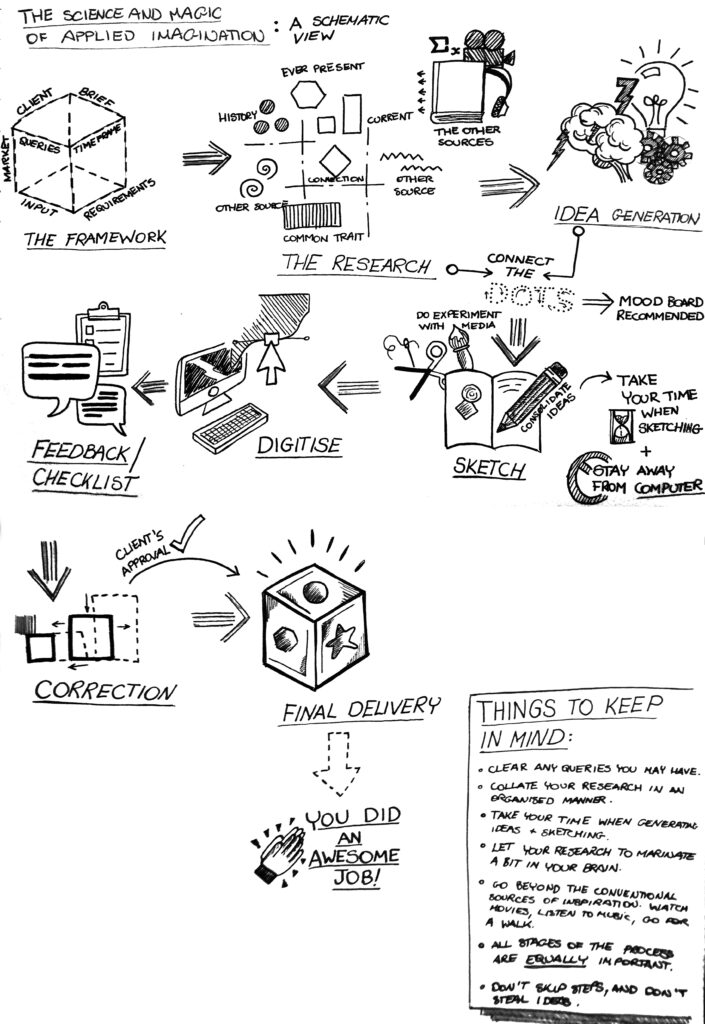
I put together a diagram to explain better my thinking process. I enjoyed working on this part, as I wanted to show the logical aspect of my thinking process. As random as my ideas are, I add a mathematical aspect to them. Think of Geometry This aspect comes into play particularly in editorial and corporate identity design. Working with fonts is very mathematical. At least for me it is. The style I used reminds me a lot of Graphical Communication classes back in college. In a nutshell, it is visual mathematics. I really enjoyed that subject, there was an artsy yet structured feel to it.
The Final Outcome
As a final outcome, I bounced between puzzles and magnetic toys for I while, then to mazes and yarn. I wanted to showcase this in a way that looked structed yet fun at the same time, which in the end I came to the conclusion that I will be making origami. As many are well aware, origami is a paper folding craft used to construct models. It is a tangible version of the way I think in some sort of way. Anything can be made from paper, as long as you follow the structured technique.
This is going to be an interesting task to work on. I have done some very simple origami before, but it will be a challenge. Should be fun the next two days.

